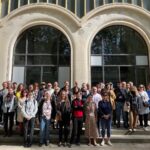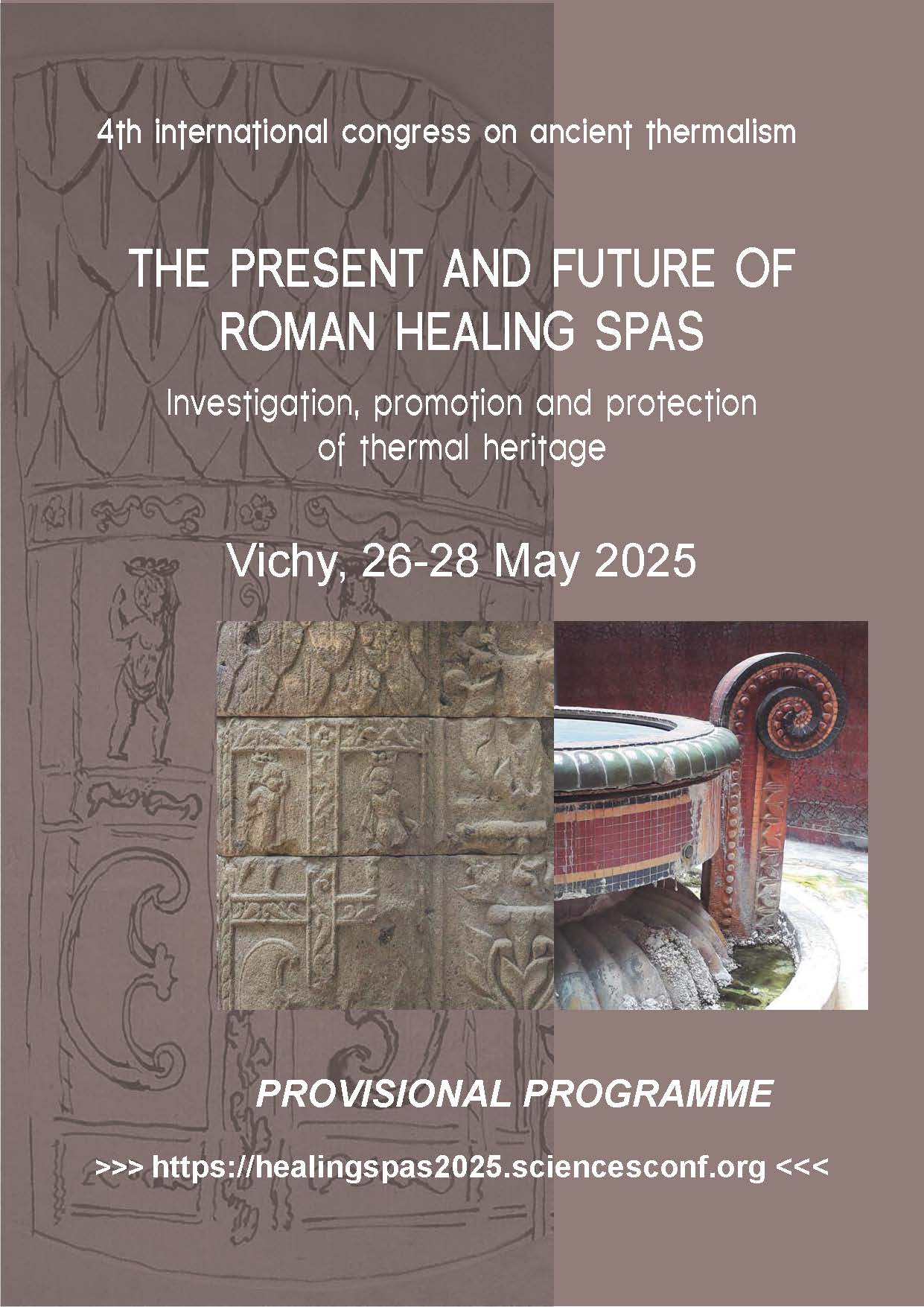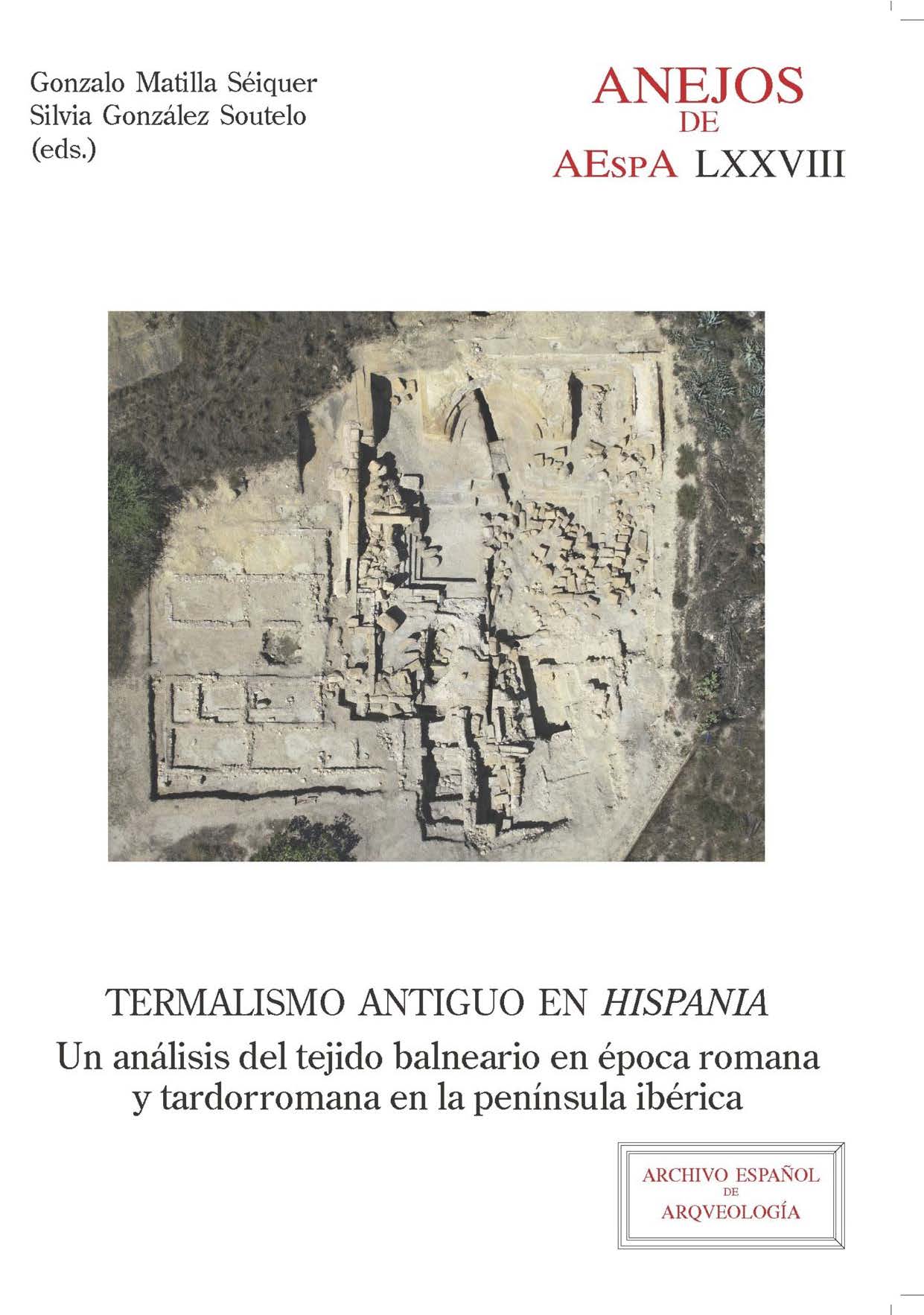4th Conference on Ancient Thermalism. The present and future of Roman spas: Investigation, promotion and protection on thermal heritage (Vichy, May 2025)
After the development of thermalism in Roman times, a new revival of the thermal tradition took place in the 19th century, giving rise to a very rich thermal culture, together with continuous progress in the field of medical hydrology, and the configuration of a large number of thermal towns.
This period was also marked by the rise of interest in antiquity, which fascinated doctors and scholars alike. Thus, archaeology became involved in medical research and contributed to the renown of spa towns, all claiming an undoubted antiquity, to the point of amplifying and even distorting archaeological realities.
In the 20th century, the study of the specificities of healing spas has been a relatively marginal field of research compared to the study of other Roman baths. The abundant bibliography shows us the appearance of a large number of archaeological remains during the construction of the modern spas, most of which were greatly altered or destroyed, including the difficulty to access to them after the 19th century works. Obviously, this makes the study of these sites very complex. However, this is a question that needs to be tackled by re-examining the old data with new perspectives and using current tools (non-invasive methods, specialised studies, etc.), which can allow us to take a new critical look at these structures and materials.
Therefore, this colloquium aims to promote interest in a revision and comparation among a large number of case studies and works on sites that have been excavated in the past. But they are still an exceptional source of information for recognising the role played by spas in the ancient world, as well as for analysing their state of conservation and the valuable information available about them.
In this effort to recover and renew studies on ancient thermalism, this congress aims to maintain the line marked by previous congresses, focused specifically on the concept of thermalism through archaeological evidence and construction remains. Thus, following the format of previous conferences, started in 2020 in Kiel, 2021 in Basel 2022, and 2023 in Madrid, we take on this challenge in a city of recognized prestige within the thermalism such as Vichy (France).
Thus, in addition to the topics discussed in the previous meetings and recent events (Madrid 2023, Nanterre 2024), we propose to return to the historiography, rediscovering the archaeological evidence discovered in the 19th century, like an aspect of fundamental interest to be explored. Furthermore, we can wonder, what should be done with these ancient remains mixed in the active spa installations or in private collections, what remains? How have these buildings been built? Why and how were there restored already in Antiquity? How were they documented and preserved in the 20th century? And, another question even more important: How are we reading and protecting this heritage? Have these sites been well studied and understood? What type of restauration can be applicated (techniques, materials, architecture, etc)?. Could we learn about this problematic through archaeology?
In the light of these considerations, this conference will be focused on the following subjects:
- Recent revisions of thermal archaeological sites
- Methodology for recovering old data: new tools, new proposals.
- The preservation of this thermal heritage: History of discoveries and collections; history of architectural restoration and development of curative spa sites; difficulties and solutions for conserving remains; etc.
- The specific features of Roman healing spas.
- The thermal phenomenon according to hydrology, medicine and uses since Antiquity
- The diachronically role of thermalism since Roman Age.
So, Are you ready to prepare your proposal? Do you want to show us new studies and new perspectives in the study of bathing establishments using mineral-medicinal waters?
In the next weeks, we will send you the call for proposals to participate in this 4th Thermal Meeting (Vichy 2025). It will be an amazing meeting point between specialists in ancient thermalism, which allows us to have the strength and scientific support of archaeological evidence, to recognize the value of mineral-medicinal waters to build the future from the past.
We are looking forward to meeting you in Vichy next May 2025!
More information will be soon!
Elise, Lise and Silvia









